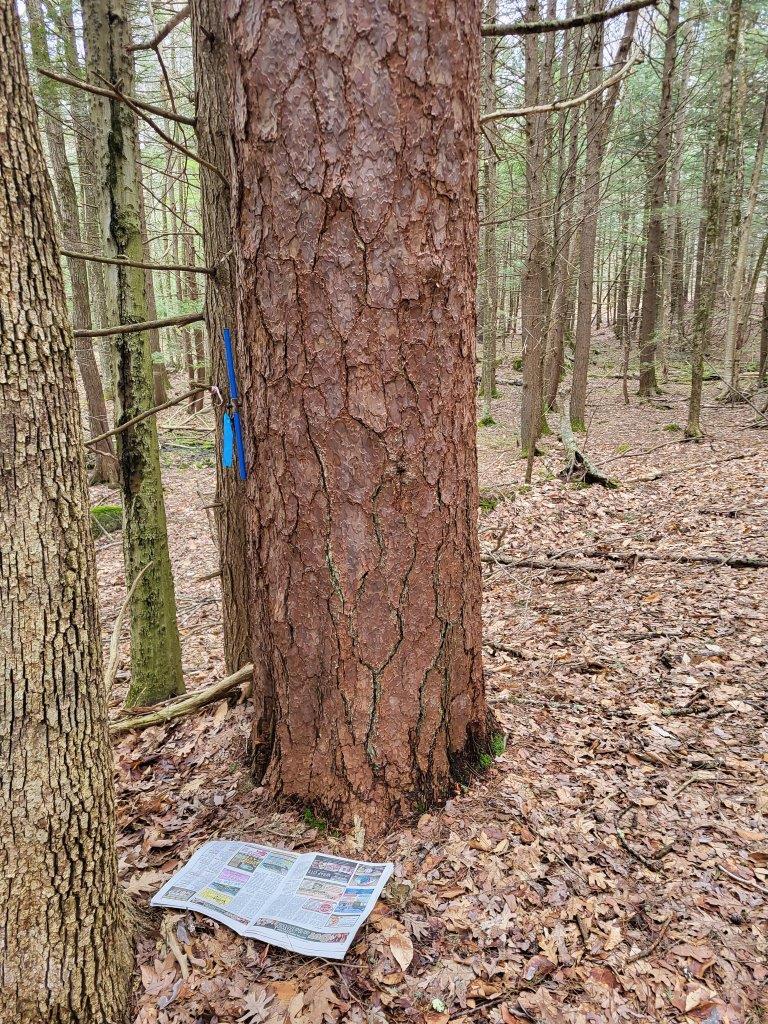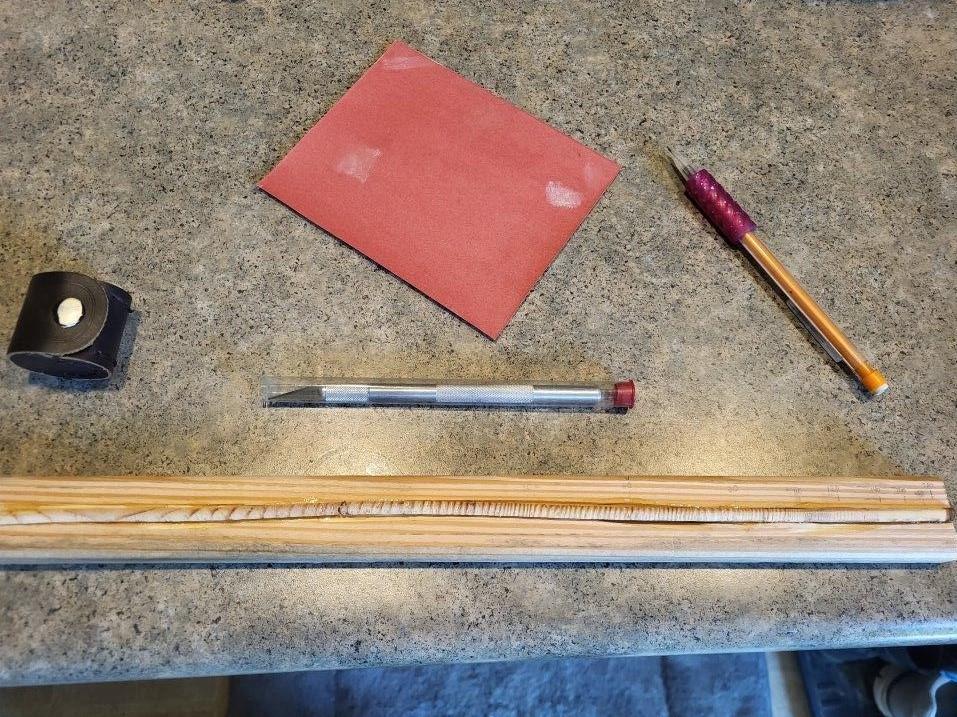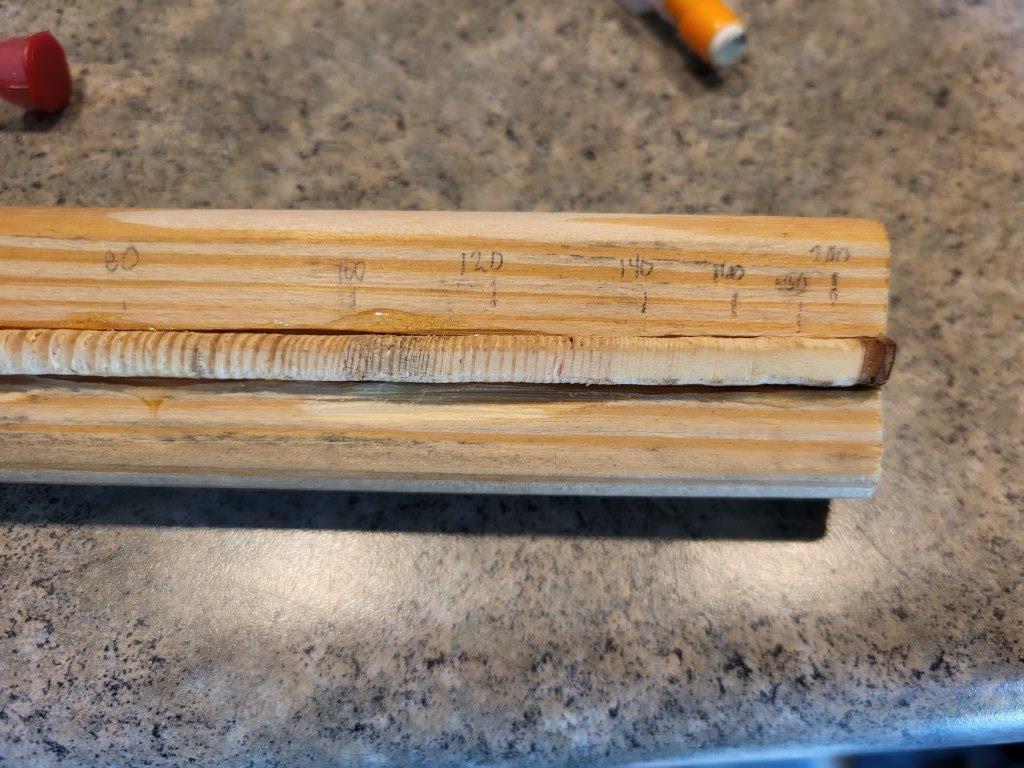Big Old Red Pine
- Tags:
- Forestry,
- Working Forests

Quite often my job as a field forester at the Forest Society takes me to interesting places doing interesting things. On this particular day, my task was to age a red pine tree.
Earlier, when scouting our Lamprey River Forest in preperation for a forest management project, I stumbled upon a very large red pine tree. Immediately this tree was out of place umong much smaller cousins that back in the 30s were planted. This tree was not planted as far as I could tell. The height of the tree went on forever and the shear size was something to behold.
I had a diameter tape with me and measured 30 inches! This was an old tree.
Older trees have mature bark, and each species of tree forms this older bark in different ways. Some become coarse or blocky others become smooth. This red pine's bark was less flaky as when its younger instead the bark was smoother in texture. On the spot I looked up the Big Tree Program's list of county champions and one was listed for Rockingham County in Epping. Wondering if this was the same tree, I filled out a nomination form and soon after recieved coorespondance from the program administrators.
It was indeed already on their list but was given a poor health rating. I observed the same signs of a tree in poor health. The crown had very little green and the needles were sparse, the lower branches were also dead. This can be attributed to perhaps old age but more than likely its the non-native insect called red pine scale that is inflicting this tree as well as others in the area.
Knowing this tree would not be on the Rockingham County champion list for very much longer, I was interested to learn more about the tree. In particular, how old it was. That brings me my second adventure to this tree with an increment borer in hand.
This handy tool extracts a core of wood from the center of the tree. The center being the start of the rings which indicate the trees age and is where the counting begins. Red pines are easier to core because they have softer wood whereas red oaks are some of the hardest trees in the woods and are much more difficult to turn the handle of the increment corer.
Old trees have lots to tell in their growth rings. How well was the tree growing? Was there ever a period of slower growth? Analyzing these rings is fascinating, particularly when it's possible to narrow down what year in time that tree was alive. This study of tree rings is called dendrochronology.

I had newspaper at the ready having been given a helpful tip from a colleague that newpaper works well when transporting a fresh core. Into the rolled up newspaper it went and then back home to dry for a few days.
I fashioned a holder for the core from a piece of scrape wood by scouring a grove in it with a skillsaw. I then secured the core using glue so that it would stay in place when sanding. Sanding is necessary to see the finest rings in order to get an accurate age.
I would also need a hand lens for the very finest and smallest rings I had ever tried to count. The first 20 years provided excellent growing conditions with maximum growth. However as the tree aged the growth rings were much smaller and required higher magnification. A hand lens did the job reasonably well. A microscope would have been better.
My best and most accurate count of the tree's age is approximately 230 years old! That's 1793 folks! This tree got its start not long after Epping was founded in 1741. The Big Tree Program was interested to catalog the trees age so once I had my number I notified them for safe keeping in their records.
For an opportunity to see this tree before it succumbs to the red pine scale ,come on out and learn from foresters who are leading a timber management tour of the Lamprey River Forest on June 15 at 5 PM.


